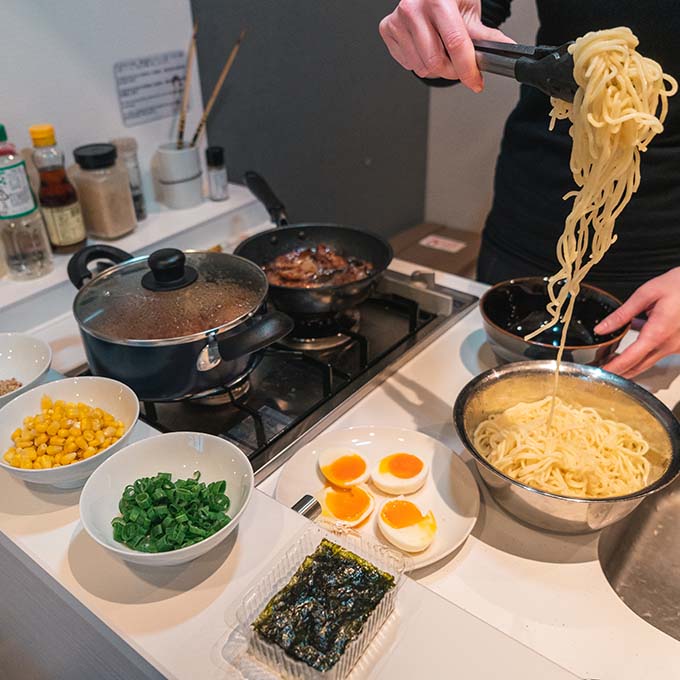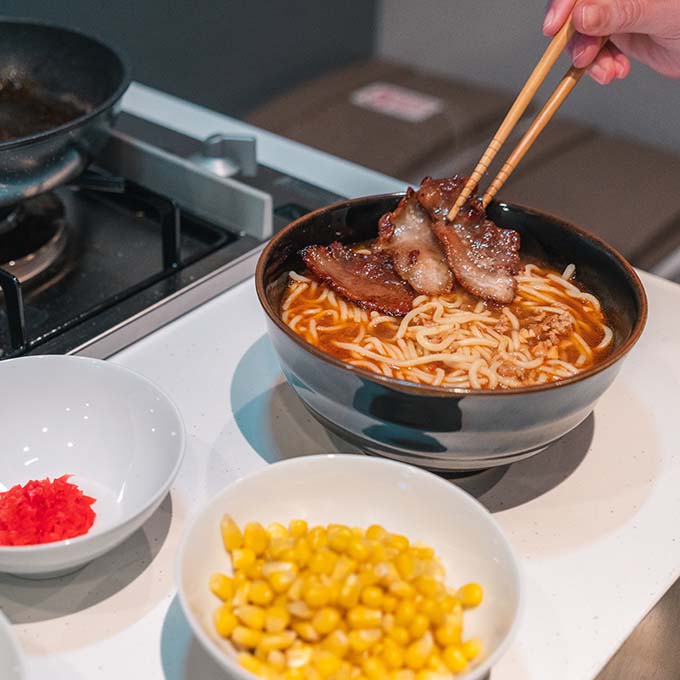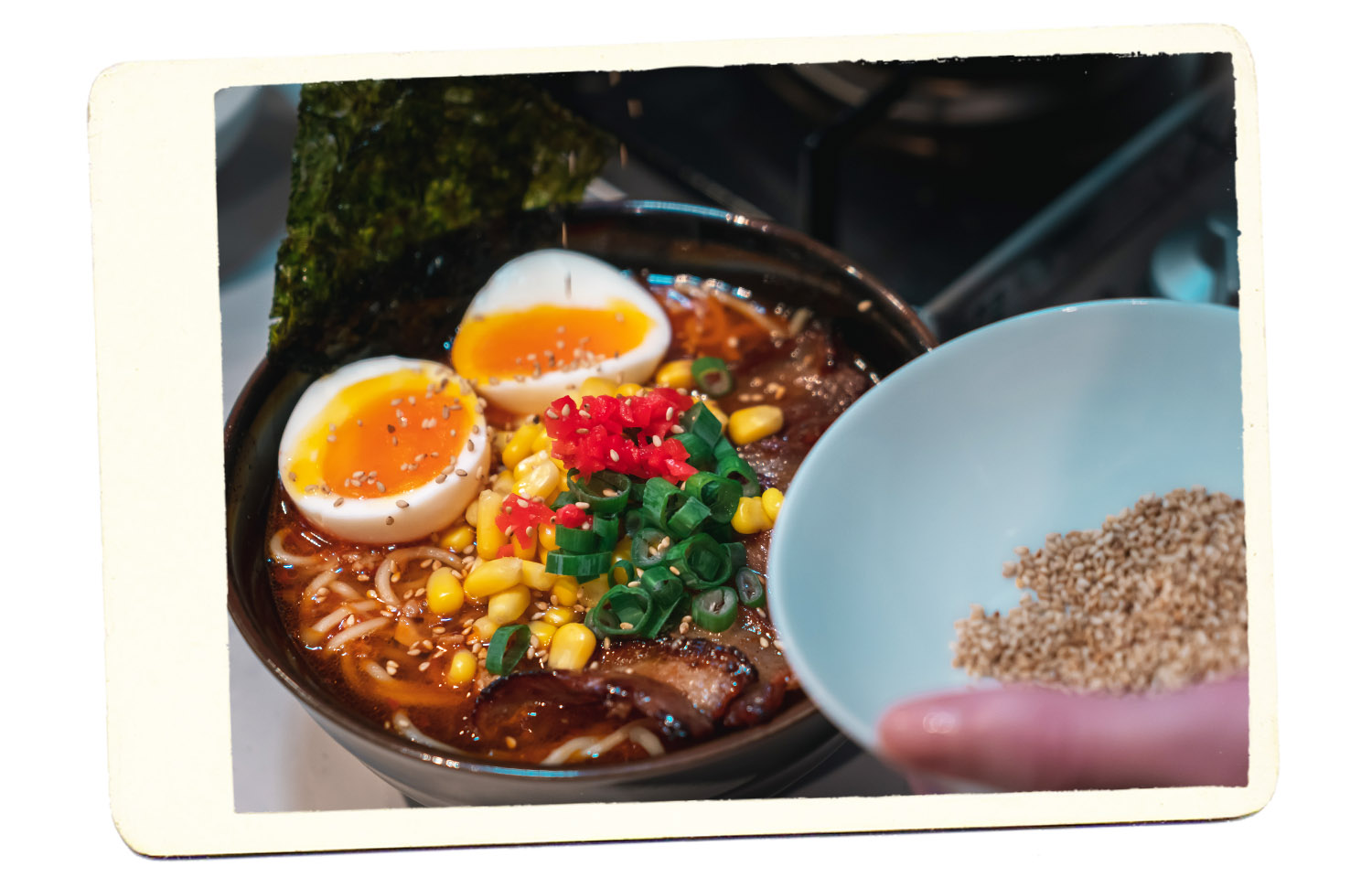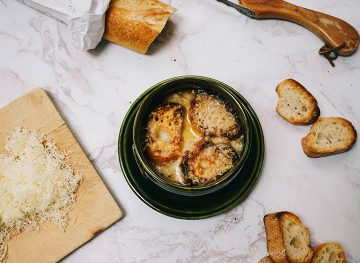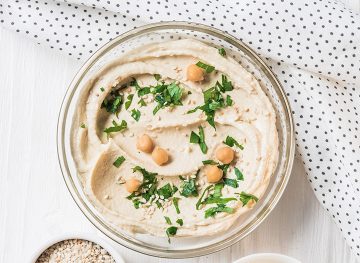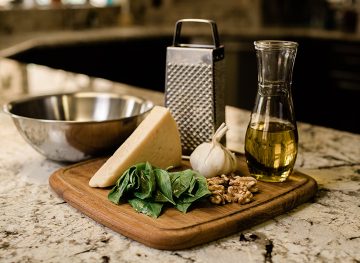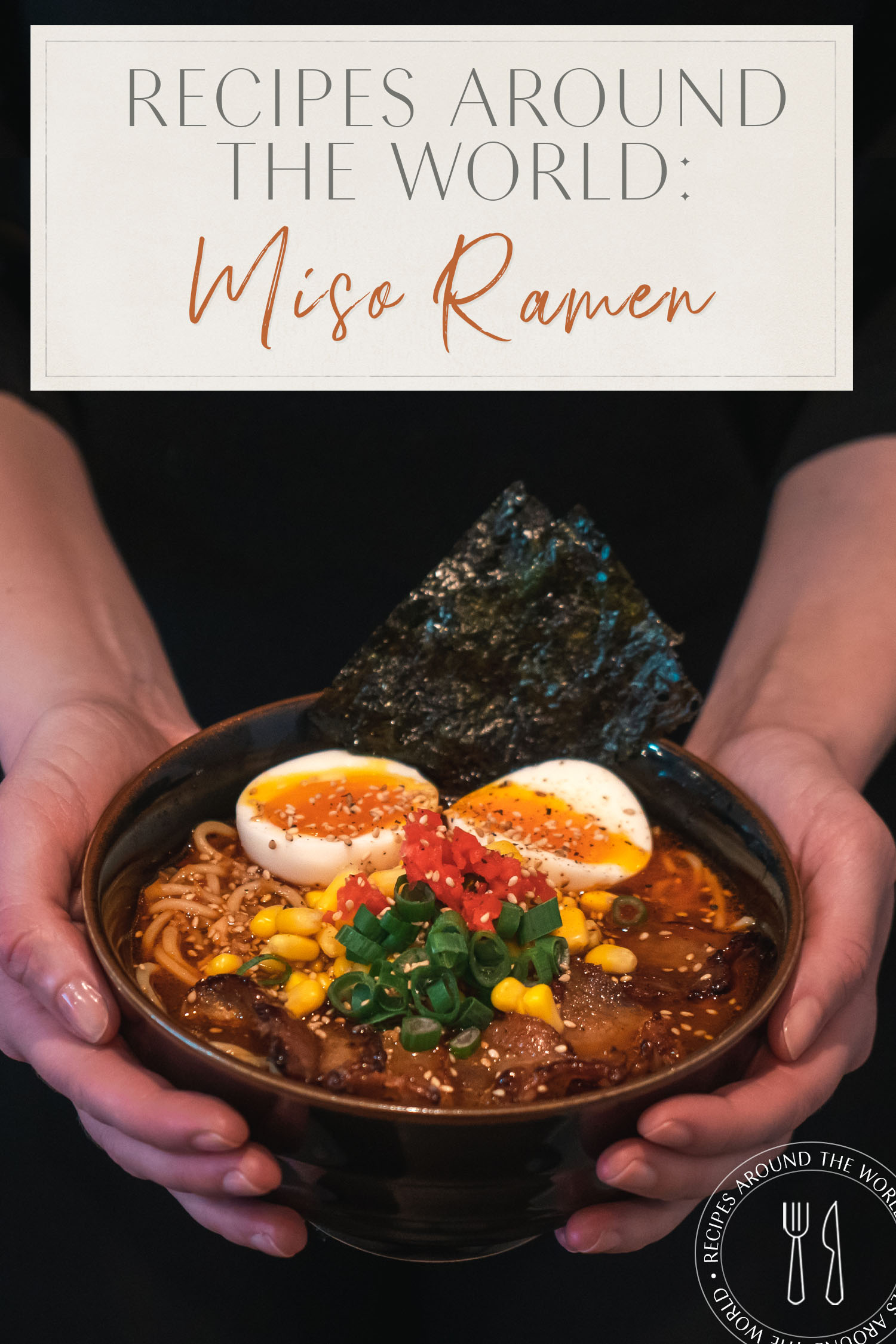
Continuing the ‘Recipes Around the World‘ series, Hana of Hana’s Travel Journal is here to teach you how to make delicious ramen from the comfort of your home!
Who wouldn’t know and love ramen? It’s considered the soul food of Japan and each chef and household have their own variation of this dish.
In its simplest form, ramen is noodles in a broth, but there are countless different possibilities beyond this basic description, ranging from a number of toppings to the base of the soup.
Overall there are about 40 different regional styles of ramen today, and in recent years, it has become a tourist attraction to travel around the country to try famous ramen noodles from particular shops.
Miso is fermented soybean paste and it’s an unmissable ingredient in many Japanese recipes.
Spicy Miso Ramen is typical for the Sapporo region in the north of Japan, where you can expect cold weather most of the year, so this ramen will really warm you up.
I got the recipe for ramen from my Japanese friend who had it in her family for generations. It’s super yummy, quite easy to make and it’s as good as in any ramen shop in Japan! I believe the ingredients like miso paste or chili bean paste can be found in any Asian shop across the US, Europe, and Australia.
Here’s how to make a Japanese-style Miso Ramen at home!
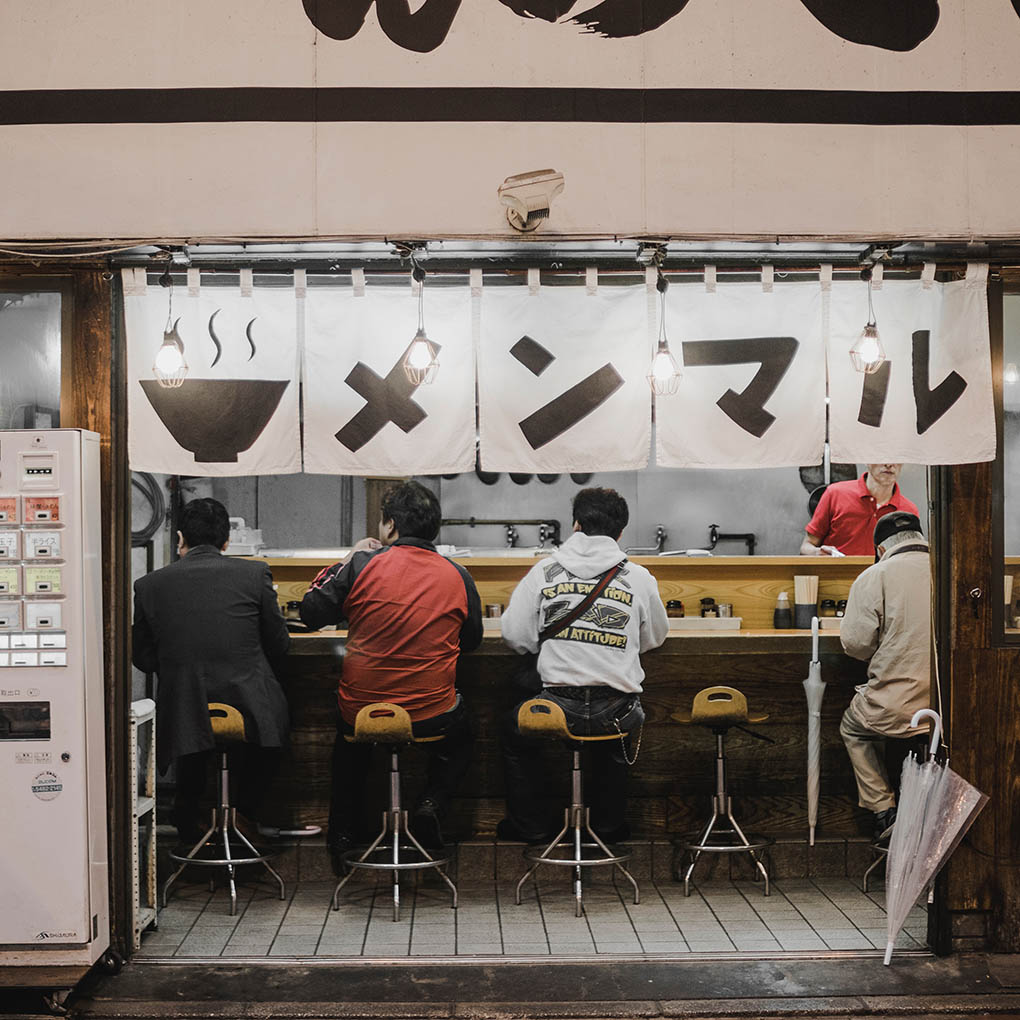

Cultural Context
Like many other Japanese dishes, ramen came to Japan from China during the Meiji restoration in the 19th century.
Very soon it became a staple dish in every household all over the country, and it’s becoming more and more popular around the world as well. Ramen made its first international boom in the ’70s when Japanese inventor Momofuku Ando for the first time created famous cup noodles.
However, the commercialization of the instant ramen was so successful that this is the only type of ramen most people know today.
I wasn’t any different. Instant noodles were my “daily bread” during my university years and for a very long time, I didn’t want to hear the word ramen at all, because I was over-fed. Luckily I found my way back to it after moving to Japan.
A great variety of ramen shops exist in Japan, ranging from old shops offering flavors unchanged since the pre-war days, to new shops purveying the latest fashionable flavors.
My very first bowl of ramen in Japan was quite extravagant; it was made with squid ink and the taste simply blew me away.
Since then I have tried many different types of ramen noodles from many different restaurants, until I decided it’s time for me to try to cook my own at home.
I am experimenting with different ramen recipes, but this one is definitely the best I’ve tried so far and the most favorite in our household.
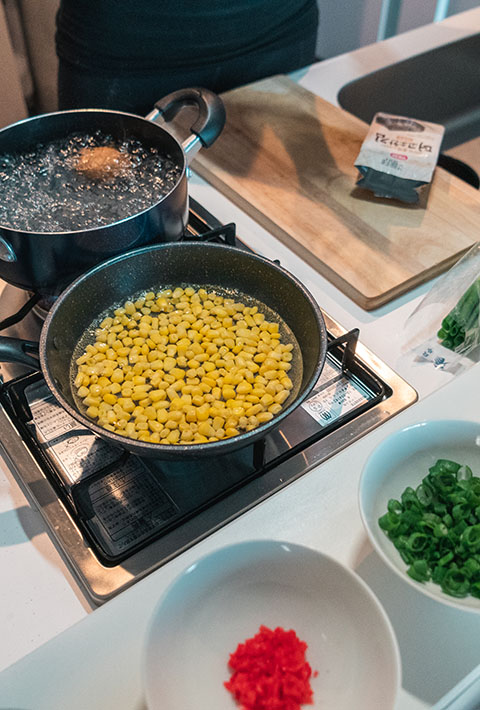
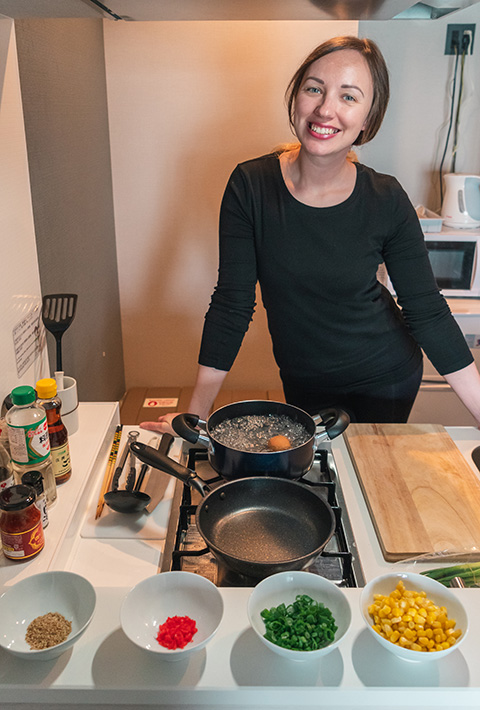
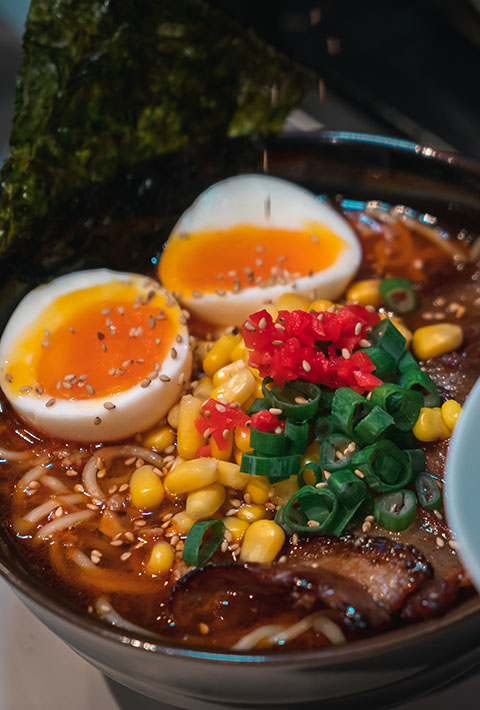
Ingredients
*Makes 3-4 servings
For the Soup:
- 100g ground pork
- ½ tbsp. of sesame oil
- 1-2 grated garlic cloves (depends on how big the cloves are and personal preference of the person making the ramen. I usually use 2 cloves)
- ½ tsp. of grated ginger
- 3 tbsp. of miso paste (you can use any type of miso according to your preference, you can even mix different types together. I prefer to use red miso paste which gives the soup richer flavor and darker color)
- 1 tsp. of Doubanjiang (a chili bean paste, also called Toubanjan. There are different brands and types of this paste and you should be able to find it in any Asian market. You can use 1 tablespoon, if you like your food spicy).
- 1 diced negi (Japanese green onion – can be substituted with a shallot or leek)
- 4 cups (960 ml) of chicken broth
- To season: white pepper, salt, sugar, and 1 tbsp. of sake
- 2 servings of ramen noodles (can be replaced by angel hair pasta, if ramen noodles are not available in your region)
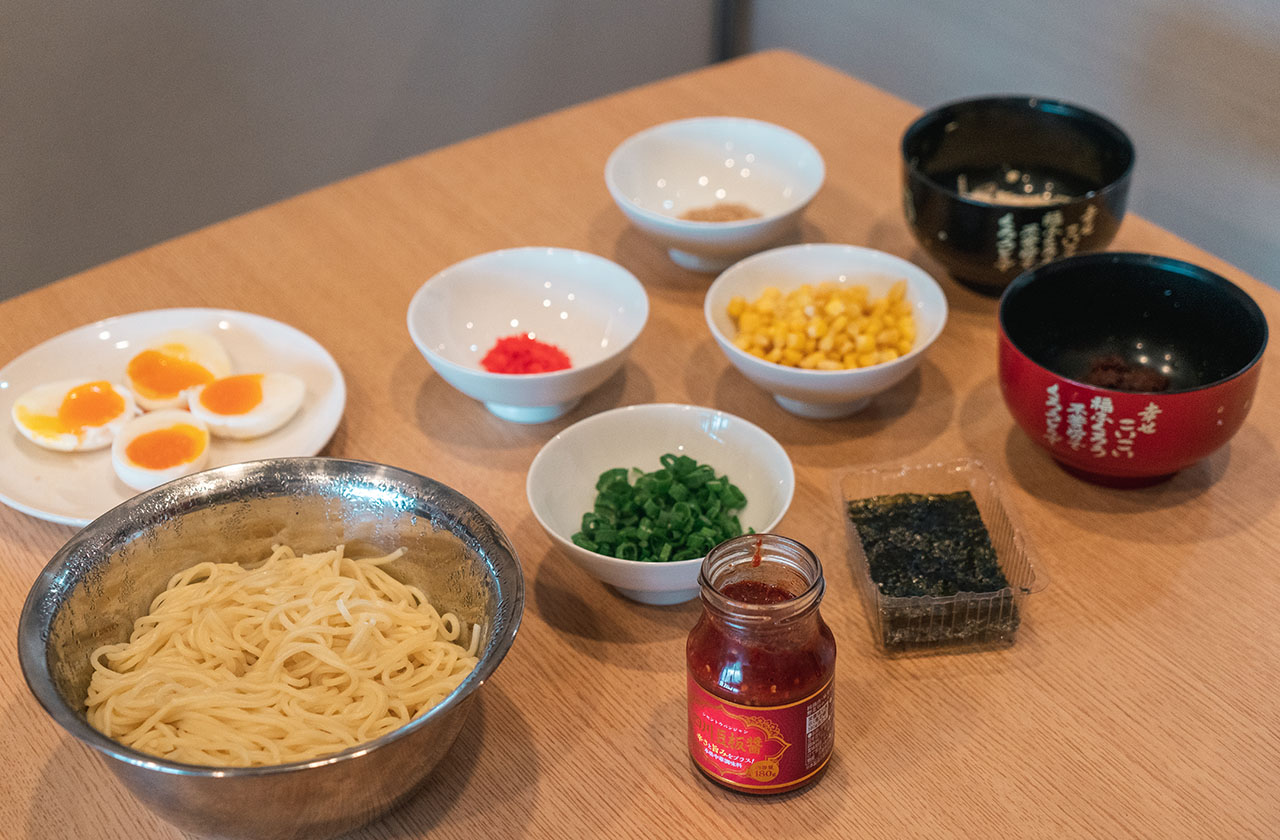
Toppings:
You can put on whatever you like or what you have available at home. Here are some examples of what I usually like to use. From this selection, I would highly recommend the boiled eggs, green onion, and corn kernels.
- Boiled egg (don’t boil it longer than 5-6 minutes to make sure the yolk will be a little bit runny on the inside)
- Corn kernels
- Green onion
- Nori seaweed
- Red pickled ginger (beni sho-ga)
- Bean sprouts
- Sesame seeds
- Pork belly
- Black pepper
- Chilli oil
- Menma (seasoned bamboo shoots)
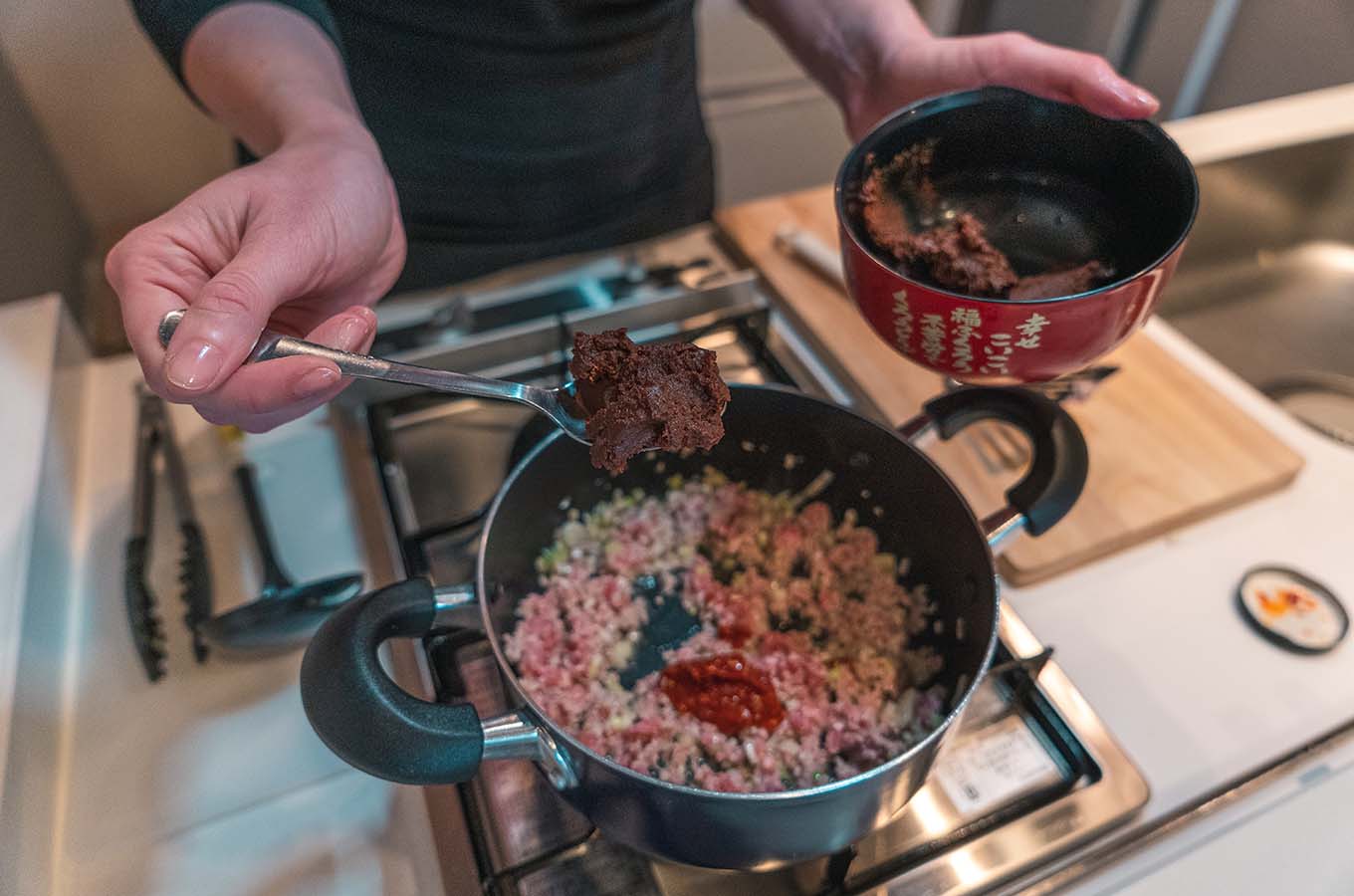

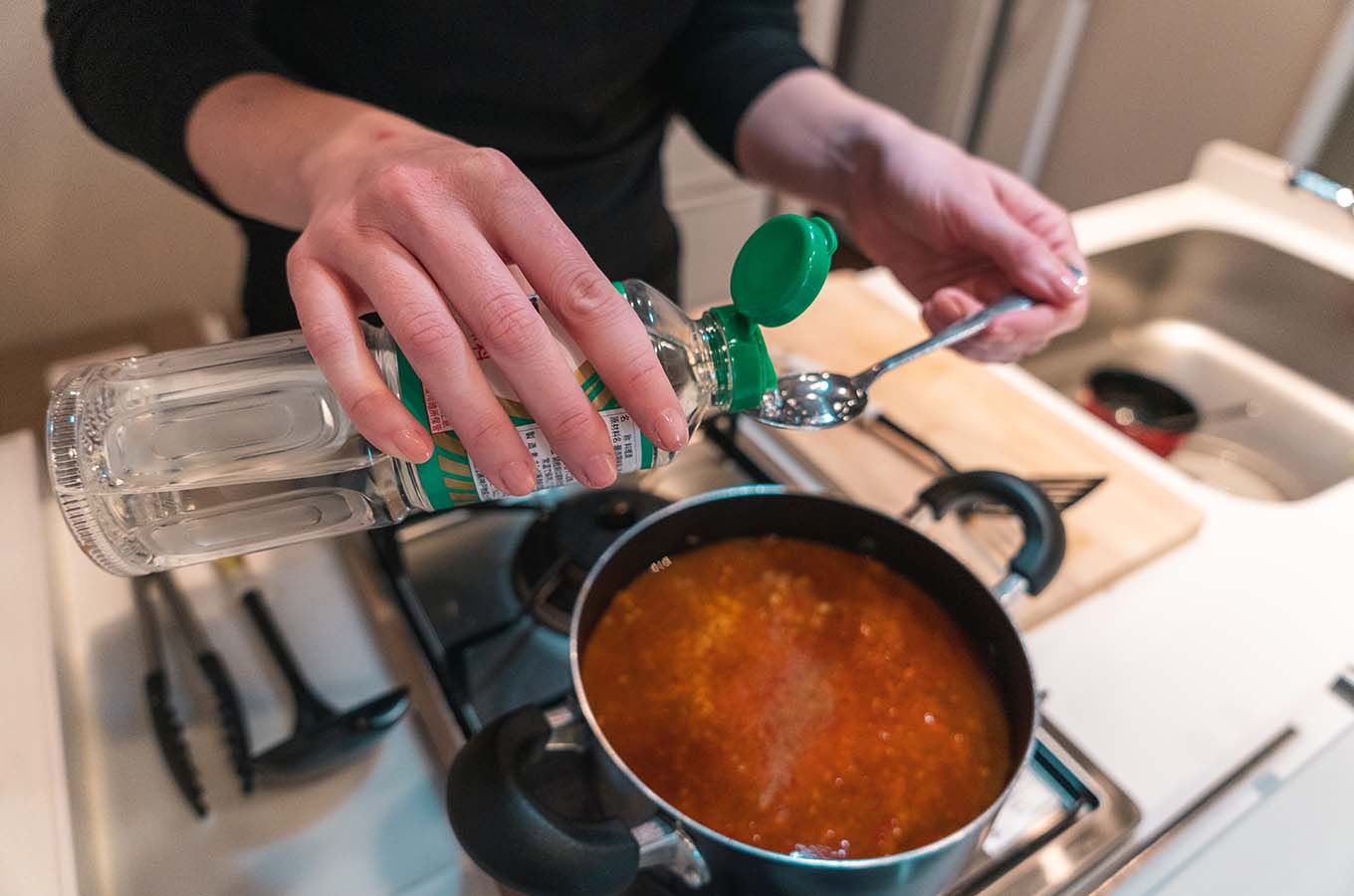
Preparation + Recipe
- To make the base for your ramen soup, pour one tablespoon of sesame oil in a pot and turn on medium heat. Add grated garlic, ginger, finely cut shallot (or leek), miso paste, and Doubanjiang to the pot and mix well.
- Add ground pork and cook until the meat is cooked through (about 5 – 8 minutes).
- When pork is cooked and everything is combined, add chicken stock to the pot and let simmer for about 5 minutes. You can season the soup according to your taste with white pepper, sugar, salt, and sake.
- While the soup is simmering, cook your noodles in a separate pot according to the instructions and strain them well.
- Prepare your ramen bowl, put the noodles inside, and add the soup.
- Now you can style your ramen with any toppings you like! I usually use pork belly, which I fry on some sesame oil on a separate pan (I also like to caramelize it with a little bit of brown sugar), then I add corn kernels, boiled egg, seaweed, spring onions, pickled ginger, and sesame seeds. I also like to sprinkle a little bit of black pepper on top.

Vegetarian Option
This type of ramen is very meaty and can be quite heavy. As I am trying to lower my intake of meat, I was experimenting with a vegetarian option of this recipe.
I simply skip the ground pork when making the base for the soup, exchange the chicken stock with a vegetable one and add lentils to make the soup more filling. Sometimes I add half a can of coconut milk so it’s creamier.
As a topping, I use mushrooms instead of pork belly. I prefer shiitake but any mushrooms will do, or you can add some fried tofu.
Tips and Tricks
Ramen is usually served in a bowl, where the soup comes first, and then the noodles are served as a topping. However, with Sapporo-style ramen, it’s the other way around.
First, you put some noodles in your bowl, then you add soup and style the toppings of your choice.
While in other countries it is frowned upon, in Japan it is considered polite to loudly slurp your noodles when eating.
This way you are showing the chef that you are enjoying the meal and at the same time, slurping apparently helps to enhance the flavor of the dish. Like the majority of meals in Japan, ramen is also eaten with chopsticks. You can use a small spoon for the soup, or you can simply drink it directly from the bowl.
In ramen shops across Japan, you get different small dishes on the side. They usually include a bowl of rice, Japanese dumplings gyoza, pickled vegetables, or miso soup.
At home, I sometimes prepare a few dumplings on the side as well, but miso ramen is quite filling so you don’t really need anything else.

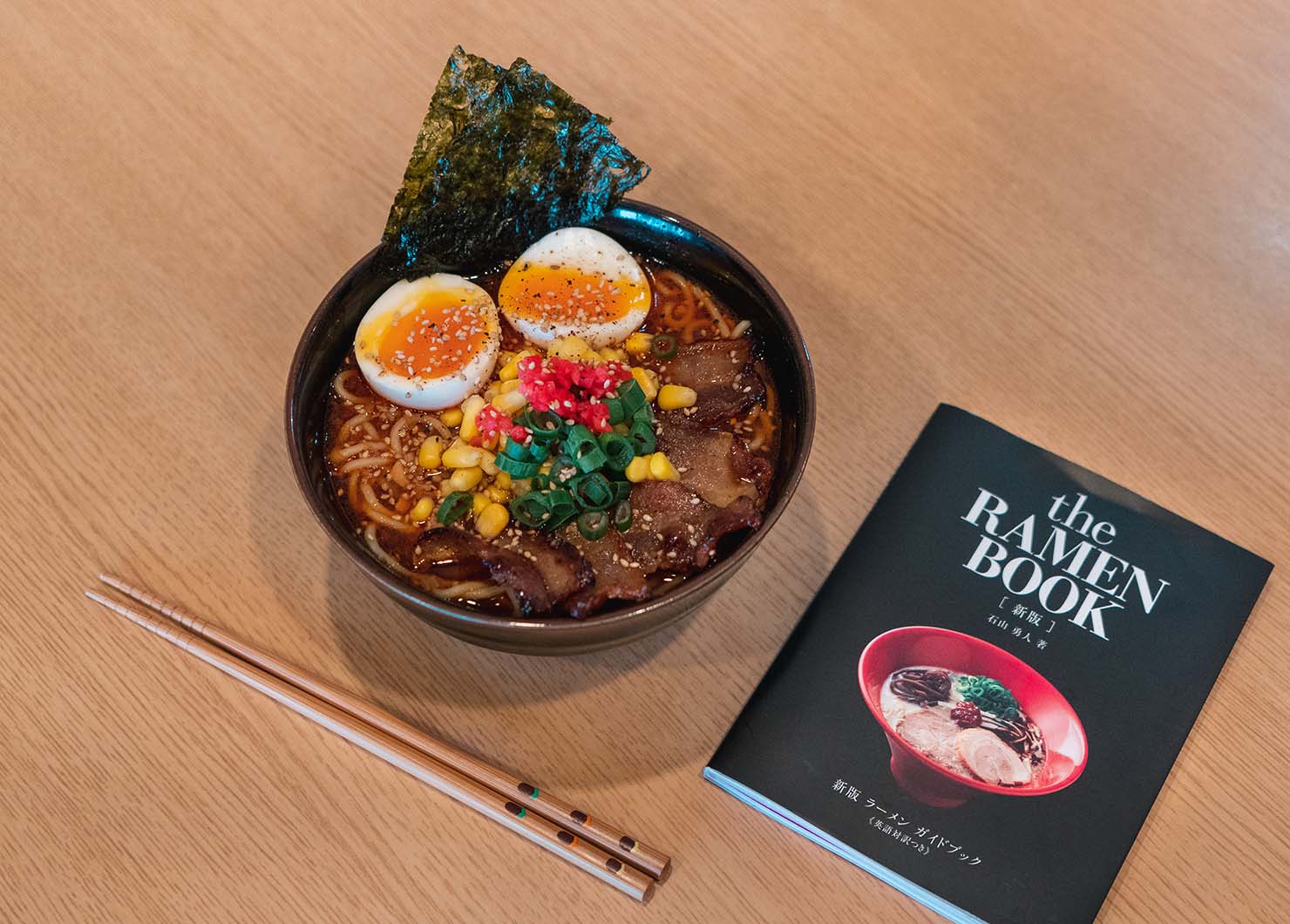
Final Thoughts
In Japan, we say Itadakimasu before eating, which can be broadly translated as “Let’s eat”, “Bon Appétit” or “Thanks for the food”, however, its true meaning is a little bit more profound.
Itadakimasu means “I humbly receive” and it can be compared to saying grace before the meal.
Its origins lie in Buddhism that teaches respect for all living things, not only animals but plants as well. After finishing the meal we say “Gochisosama deshita” as a thank you for the food (arigato means thank you and can be used in any context, while gochisosama deshita refers only to food).
I hope you will enjoy the recipe and the final dish!
Please let us know in the comments how you liked it. I have eaten ramen with my husband in various restaurants in Japan, but he always says this recipe is the winner.
